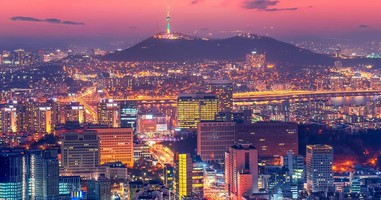
Blogs
A few words about energy efficiency
November 10, 2020


Maksat Tursynov
analyst
Today it is difficult to imagine the production of goods or services without the use of electricity. To some extent, electricity is consumed at one (or more) of the stages of turnover. It is not for nothing that electricity connection is one of the indicators used in the world Bank's Doing Business rating.
Have you ever wondered how much electricity is consumed in our country and is it used effectively? Traditionally, in order to determine the energy efficiency of a particular economy, the GDP energy intensity indicator is used, calculated as the ratio of the primary consumption of all fuel and energy resources to the GDP value. We will look at energy consumption in terms of performance and focus specifically on electricity consumption. In other words, let's determine how much gross product is produced in the country for each consumed kWh of electricity.
The volume of GDP is presented in 2019 prices to level the fluctuations in the national exchange rate. currency and make it easier for the reader to understand (it is easier to imagine what 1 000 tenge in 2019 was like than in 2015). The productivity of the Republic of Kazakhstan was about 660 tenge per 1 kW * h. At the same time, the indicator has practically not changed since 2015. The most energy-intensive industries (metallurgy, chemical industry, mechanical engineering, etc.) located in 6 regions (Pavlodar, Karaganda, Zhambyl, East Kazakhstan region, Aktobe, Kostanay), as expected, have a level of productivity significantly lower than the republican. The undisputed leaders in the output of each consumed kW * h of electricity are Almaty (including Almaty), WKO and Atyrau oblasts, where the indicator exceeds the republican indicator by an average of 2.3 times. In other regions, the values vary from 1,183 (in Kyzylorda) to 709 (in Mangistau) tenge per kWh. and on average amounted to about 870 tenge in 2015-2019.
However, the main conclusion from the diagram is not in identifying the most non-productive areas, but in their stagnation. For 2015-2019 only 3 regions saw more or less significant productivity growth: 10% in Kostanay, 5% each in North Kazakhstan and East Kazakhstan. In other regions, the indicator either decreased (by a maximum of 12% in Kyzylorda and Aktobe), or practically did not increase. Those. as the economy produced 660 tenge for each kW * h in 2015, it does. The traditional indicator of energy intensity, which takes into account all fuel resources, decreased until 2018, indicating a decrease in consumed resources (the indicator is calculated by the Bureau of National Statistics).
It should be noted calculated value does not take into account many factors, but is a visual picture of b with respect to energy efficiency in our country. Despite the concepts and plans adopted by the Government (the Concept for the transition of the Republic of Kazakhstan to a "green economy", the Concept for the development of the fuel and energy complex of the Republic of Kazakhstan until 2030), significant improvements in the direction of energy saving have not been implemented. The reasons for this may be many, both one of the lowest electricity prices in the world (due to the widespread subsidizing of the consumption of all energy resources), and extremely high depreciation of the main capacities, which does not allow preventing energy losses.
* For Akmola, Almaty and Turkestan regions, indicators of cities of republican significance are taken into account
Source: Kazakhstan Electricity Association Market Council, Bureau of National Statistics
all publications











